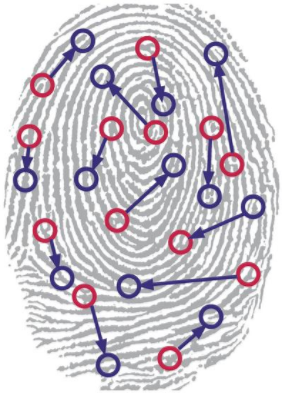In Decision That Sounds the “Death Knell” for Fifth Amendment Protection, Defendant Ordered to Provide Cell Phone Password: eDiscovery Case Law
In Commonwealth v. Jones, SJC-12564 (Mass. Mar. 6, 2019), the Supreme Judicial Court of Massachusetts reversed a lower court judge’s denial of the Commonwealth’s renewed Gelfgatt motion (where the act of entering the password would not amount to self-incrimination because the defendant’s knowledge of the password was already known to the Commonwealth, and was therefore a “foregone conclusion” under the Fifth Amendment and art. 12 of the Massachusetts Declaration of Rights), and the court remanded the case to the Superior Court for entry of an order compelling the defendant to enter the password into the cell phone at issue in the case.
Case Background
In this case involving allegations that the defendant was trafficking a person for sexual servitude, the Commonwealth of Massachusetts seized a cell phone from the defendant that it believed contained material and inculpatory evidence, but was unable to access the phone’s contents because they were protected by a passcode. The Commonwealth sought to compel the defendant to decrypt the cell phone by filing a motion for an order requiring the defendant to produce a personal identification number access code in the Superior Court.
The central legal issue concerned whether compelling the defendant to enter the password to the cell phone would violate his privilege against self-incrimination guaranteed by both the Fifth Amendment and art. 12. The Commonwealth argued that under the decision in Commonwealth v. Gelfgatt, 468 Mass. 512, 11 N.E.3d 605 (2014), the act of entering the password would not amount to self-incrimination because the defendant’s knowledge of the password was already known to the Commonwealth, and was therefore a “foregone conclusion” under the Fifth Amendment and art. 12. Following a hearing, a judge denied the Commonwealth’s motion, concluding that the Commonwealth had not proved that the defendant’s knowledge of the password was a foregone conclusion under the Fifth Amendment.
Several months later, the Commonwealth renewed its motion and included additional factual information that it had not set forth in its initial motion. The judge denied the renewed motion, noting that because the additional information was known or reasonably available to the Commonwealth when the initial motion was filed, he was “not inclined” to consider the renewed motion under the Massachusetts Rules of Criminal Procedure. The Commonwealth then filed a petition for relief in the county court, and the single justice reserved and reported the case to the full court. The single justice asked the parties to address three specific issues, in addition to any other questions they thought relevant:
- What is the burden of proof that the Commonwealth bears on a motion like this in order to establish a “foregone conclusion,” as that term is used in Commonwealth v. Gelfgatt?
- Did the Commonwealth meet its burden of proof in this case?
- When a judge denies a ‘Gelfgatt’ motion filed by the Commonwealth and the Commonwealth thereafter renews its motion and provides additional supporting information that it had not provided in support of the motion initially, is a judge acting on the renewed motion first required to find that the additional information was not known or reasonably available to the Commonwealth when the earlier motion was filed before considering the additional information?
Court’s Ruling
In an opinion written by Justice J. Kafker, with regard to question 1, he wrote that: “we conclude that when the Commonwealth seeks a Gelfgatt order compelling a defendant to decrypt an electronic device by entering a password, art. 12 requires that, for the foregone conclusion to apply, the Commonwealth must prove beyond a reasonable doubt that the defendant knows the password.”
With regard to question 2, Justice Kafker wrote: “The defendant’s possession of the phone at the time of his arrest, his prior statement to police characterizing the LG phone’s telephone number as his telephone number, the LG phone’s subscriber information and CSLI records, and Sara’s statements that she communicated with the defendant by contacting the LG phone, taken together with the reasonable inferences drawn therefrom, prove beyond a reasonable doubt that the defendant knows the password to the LG phone. Indeed, short of a direct admission, or an observation of the defendant entering the password himself and seeing the phone unlock, it is hard to imagine more conclusive evidence of the defendant’s knowledge of the LG phone’s password. The defendant’s knowledge of the password is therefore a foregone conclusion and not subject to the protections of the Fifth Amendment and art. 12.”
With regard to question 3, Justice Kafker wrote: “Although some, if not all, of the additional information included in its renewed motion may very well have been available to the Commonwealth at the time it filed its initial motion, in light of the nature and purpose of Gelfgatt motions and the circumstances of this case, the judge erred in concluding that he need not consider the additional information “[a]bsent a showing of new evidence not otherwise available to the Commonwealth.” The motion judge therefore abused his discretion in denying the Commonwealth’s renewed Gelfgatt motion.”
As a result, the motion judge’s denial of the Commonwealth’s renewed Gelfgatt motion was reversed, and the case was remanded to the Superior Court for entry of an order compelling the defendant to enter the password into the cell phone
Justice J. Lenk, while concurring with the decision, also said this: “The court’s decision today sounds the death knell for a constitutional protection against compelled self-incrimination in the digital age. After today’s decision, before the government may order an individual to provide it with unencrypted access to a trove of potential incriminating and highly personal data on an electronic device, all that the government must demonstrate is that the accused knows the device’s passcode. This is not a difficult endeavor, and in my judgment, the Fifth Amendment and art. 12 demand more. That is, before the government may compel an accused’s assistance in building a case against that accused, the government must demonstrate that it already knows, with reasonable particularity, of files on the device relevant to the offenses charged, and that the defendant knows the passcode to unlock them. Because I conclude that the government here met those burdens, I join in the court’s result.”
So, what do you think? Should defendants be ordered to provide their passcodes, even if it leads to incriminating evidence against them? Please let us know if any comments you might have or if you’d like to know more about a particular topic.

Case opinion link courtesy of eDiscovery Assistant.
Sponsor: This blog is sponsored by CloudNine, which is a data and legal discovery technology company with proven expertise in simplifying and automating the discovery of data for audits, investigations, and litigation. Used by legal and business customers worldwide including more than 50 of the top 250 Am Law firms and many of the world’s leading corporations, CloudNine’s eDiscovery automation software and services help customers gain insight and intelligence on electronic data.
Disclaimer: The views represented herein are exclusively the views of the author, and do not necessarily represent the views held by CloudNine. eDiscovery Daily is made available by CloudNine solely for educational purposes to provide general information about general eDiscovery principles and not to provide specific legal advice applicable to any particular circumstance. eDiscovery Daily should not be used as a substitute for competent legal advice from a lawyer you have retained and who has agreed to represent you.



